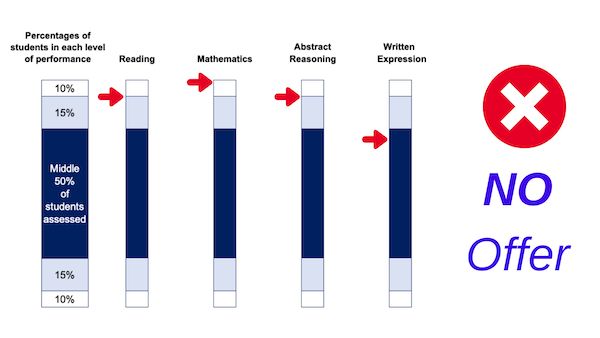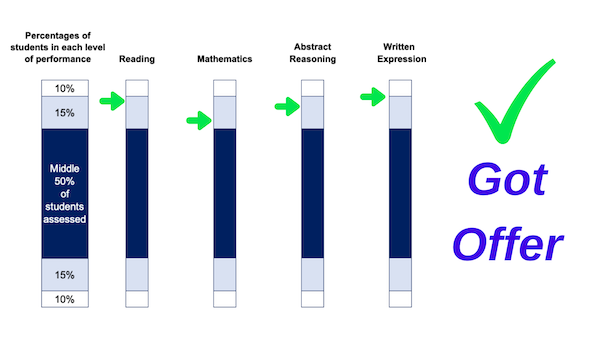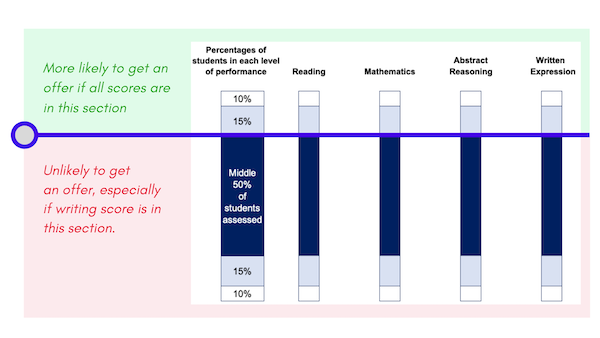What score do you need in order to pass the SEAL ACER HAST exam & get a spot in your dream school?
With gifted and talented exams, the cut-off marks vary from year to year. This is because your child's performance is compared against other applicants.
Below are diagrams of REAL students that show how competitive your child's test performance should be in each of the subtests of the ACER HAST exam to get a SEAL /SEALP offer.
You'll see that your child's performance needs to be in the top 15% or better in ALL subtests in order to feel more confident of receiving a school offer.



A few things to note:
- It's not enough to get an exceptional mark in one subtest but lag behind in the other. Your child needs to score in the top 15% range with at least one subject in the top 10%.
- Writing is as important as other parts of the test. Even if your child got a "superior" grade in other areas, they are highly unlikely to get a SEAL/SEALP offer with a poor score in writing.
- To get the SEAl/SEALP spot, your child needs to perform better than other applicants. Effective preparation for the ACER HAST exam can be a decisive factor in whether your child gets the offer or not.